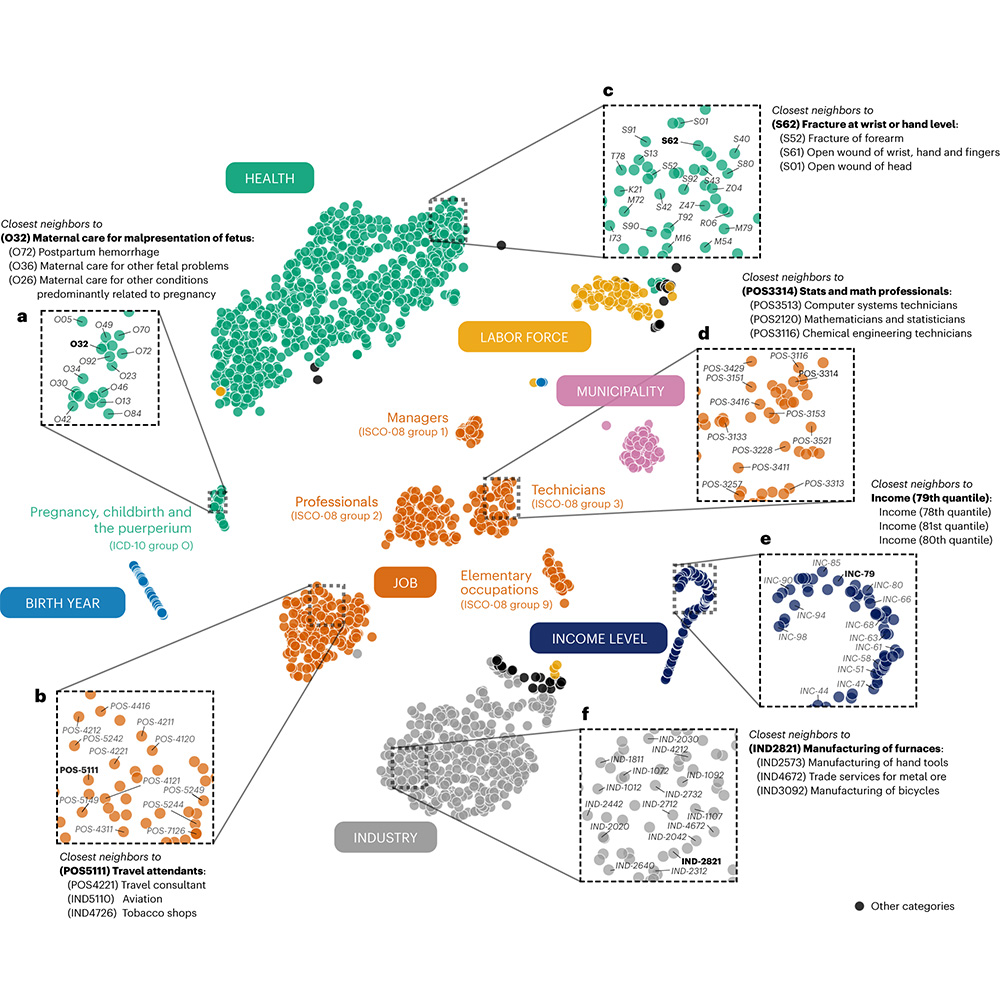Artificial intelligence seems to have no limits, and one demonstration of this is its ability to predict the date of a person’s death. Said like that, it sounds shocking, but before coming to hasty judgments, we need to understand what it is about and how it came to be (although immediately after reading the news, even I cringed). It has to do with AI and a large amount of data from 6 million Danish citizens, which made it possible to develop a model capable of predicting a person’s life expectancy and probable causes of death. This was done by a team of researchers from Northeastern University and the University of Copenhagen who created Life2Vec, an AI model based on a transformer, a type of deep learning architecture also used in large generative artificial intelligence models such as ChatGPT.
The difference lies in the training of the system, which, as stated in the abstract of the study published in Nature, in this case, was carried out with a complete master data set, including information on life events related to people’s health, education, occupation, income, address and working hours. Combining this information with Life2Vec has been used to ‘create vector representations of human lives, from which accurate predictions can be made’.
A system of correlations useful for examining a country
Structurally, the system allows correlations to be identified between various aspects of a person’s life, predicting personality nuances and potential mechanisms influencing life outcomes. Among these, the researchers analysed people’s probability of mortality and its causes. Explaining the results disseminated in the article ‘A transformer method that predicts human lives from sequences of life events’ was Sune Lehmann, professor of applied mathematics and computer science at DTU Computer in Lyngby and one of the authors of the study.
“When we visualise the space that the model uses to make predictions, it looks like a long cylinder leading from low probability of death to high probability of death,” Lehmann explains. “Then we can show that at the end, where there is a high probability of death, many of those people are actually dead, and where there is a low probability of death, the causes of death are something we couldn’t predict, like car accidents.”

Tina Eliassi-Rad, professor of computer science at Northeastern University is another author of the Nature article, points out that although the model makes very accurate predictions, they are based on correlations, very specific cultural and social contexts, and the types of biases that exist in each data set. “This kind of tool is like an observatory of society, and not of all societies,” she says. In this case, it is a study conducted in Denmark, a country that has its own culture, laws and social rules. Whether this can be done in America is another story.”
AI can do unpredictable things: how far do we want to go?
It has to be said that the tests show good accuracy, especially for the 30-55 age group, partly because the model was trained with information on various aspects of the lives of the people involved over a time span from 2008 to 2020. The amount of hospitalisations and doctor’s visits made by a person, as well as emergency surgeries, obviously weighs on the various estimates. A similar argument applies to income since, in every country, those with a high income have a better chance of surviving than others, at least on a theoretical level.

Having said that, the study complied with Danish laws and the GDPR, separating detailed information on health and other areas from personal data in order to maintain people’s privacy (Statistics Denmark holds all data, the central authority for Danish statistics, and provided exclusively to the researchers by the Danish government only to carry out the research), it is clear that Life2Vec is to be considered a limited use-case model.
There is no chance that it can be used in the health field to make predictions about people, not least because the researchers aimed to stimulate public debate on the ability of AI models to predict future events. The question concerns everyone: how much space do we want to give to predictive models, considering the relative consequences of producing such a system in the way we live and deal with certain situations?
We should be aware that AI can make mistakes or outline a future (at all levels) that differs from what actually happens during one’s lifetime. Perhaps we should think about this and the possibility of delimiting the field, at least at this early stage of great enthusiasm for technology with the potential to change our lives, also by outlining unpredictable perspectives.



